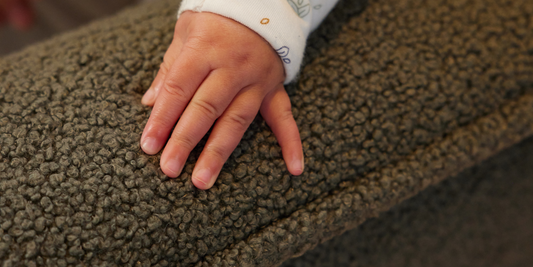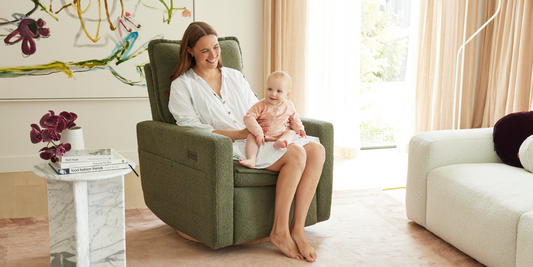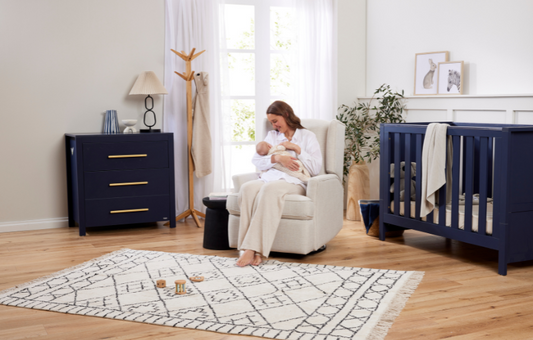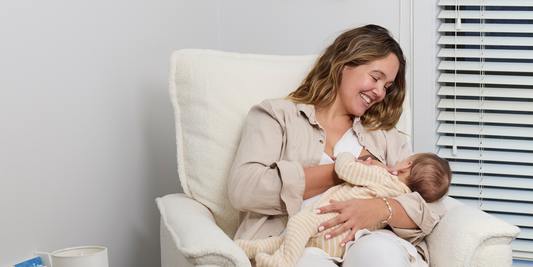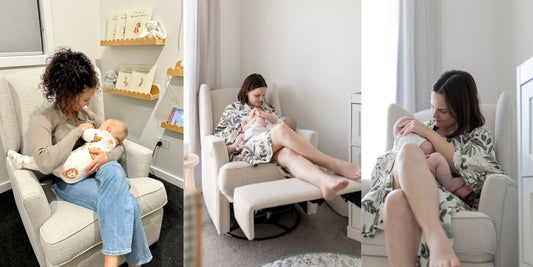Why OEKO-TEX® certification matters for nursery chair upholstery
Style and colour are often the key considerations you make when buying a nursery chair. But as much as the aesthetics matter, so too does the fabric the chair is made with. It’s not just about how the chair looks – it’s about how it feels to the touch, how durable it is and, most significantly, how safe it is for you and your baby. At iL Tutto, we only use high-quality fabrics that are durable and easy-care. Importantly, all of our fabrics also carry standard 100 by OEKO-TEX® certification so they’re free from toxins and chemicals that could be harmful to your baby. We explore the standard 100 by OEKO-TEX® certification and the care that goes into our iL Tutto fabrics. Why OEKO-TEX® certification matters The standard 100 by OEKO-TEX® certification is one of the world’s best-known labels for textiles independently tested for harmful substances. To receive certification, a fabric must meet strict safety criteria that ensure it’s free from a wide range of chemicals, including heavy metals, formaldehyde and allergens. The OEKO-TEX® certification is updated regularly, ensuring that fabric producers continue to meet these stringent safety standards. So why does this matter for a nursery chair? Babies are particularly sensitive to their surroundings and their skin is far more delicate than adult skin. Whether you’re feeding or snuggling your baby in the chair, their skin will often come into contact with the fabric. Choosing an OEKO-TEX® certified nursery chair means that you’re providing a safe, non-toxic space for your baby. It’s one less thing to worry about as a new parent, knowing that the chair’s fabric won’t release harmful substances into the air or onto your baby’s skin. For iL Tutto, this means a continued commitment to offering fabrics that are not only stylish, functional and high-quality but also safe. The iL Tutto fabric collection The iL Tutto fabric collection combines luxurious textures with practical features, ensuring that your nursery chair is as comfortable as it is stylish. One of the standout fabrics in the collection is the ever-popular Teddy. This cosy fabric offers a warm, inviting texture, perfect for snuggling during late-night feeds or quiet moments with your baby. Teddy is not only comfortable but also durable and the plush appearance adds a touch of elegance to any nursery space. There are two teddy nursery chair styles in the iL Tutto collection – Frankie and Louie. Bouclé, another favourite in the iL Tutto range, is known for its unique textured, nubby weave. The bouclé texture not only looks beautiful but also hides wear and tear, making it an good option for families who want a stylish chair that can stand up to everyday life. Best of all, bouclé is easy to clean and care for, ensuring it looks fresh and stylish for years to come. There are a range of bouclé nursery chairs in the iL Tutto collection, including Chelsea, Lulu, Paige, and Henry. The collection also includes four fabric options – Eggshell, Sand Shell, Coastal Sand and Pure Grey. These neutrals are incredibly versatile, offering a range of styling options for the nursery. They’re soft to touch and highly resilient to ensure the longevity of your nursery chair. You can choose these fabrics on a number of chairs in the iL Tutto collection, including Chelsea, Frankie, and Billie. Complete peace of mind When choosing the right fabric for your nursery chair, consider the colour of your nursery and opt for a fabric that will complement that. Also consider your preferences for texture. Do you want a fabric that’s quite tactile like a bouclé or teddy fabric? Or do you prefer the soft touch of leather? Or a streamlined fabric texture? If you’re uncertain, we always recommend ordering a fabric swatch before you order your chair to ensure the fabric is exactly what you’re looking for. Investing in an iL Tutto nursery chair means investing in the peace of mind of OEKO-TEX®certification, no matter which fabric you choose. Explore the collection and discover stylish, practical nursery chairs designed by parents for parents.


